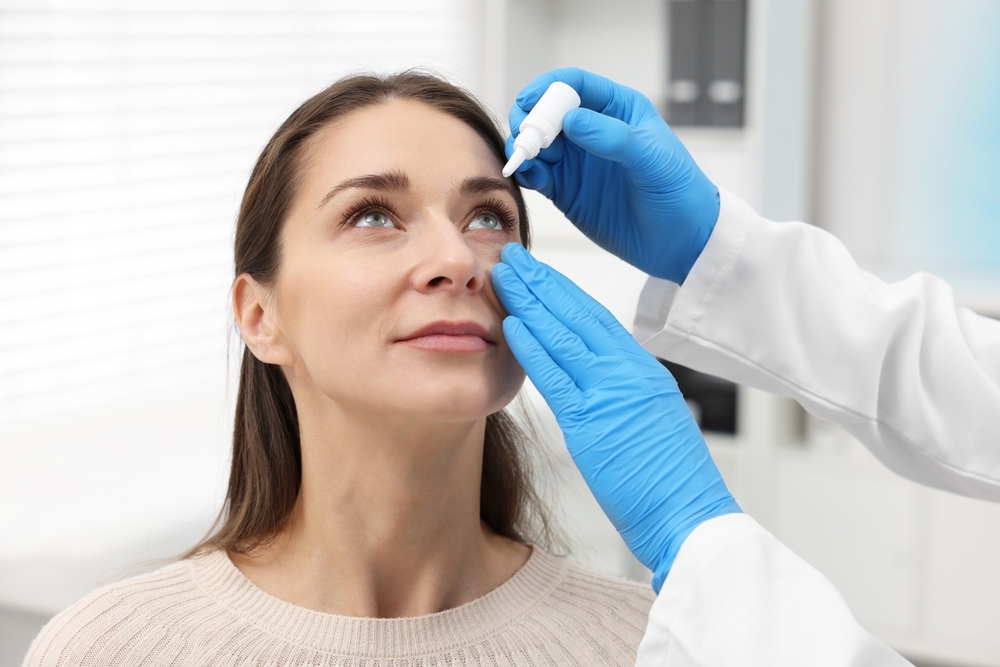
One underly cause of dry eye is meibomian gland dysfunction, which occurs when the glands in the eyelids that produce the oil layer of tears become blocked or dysfunctional. When the glands are unable to produce enough oil, the tears evaporate quickly, causing dryness and discomfort. Additionally, the blockages can lead to inflammation and infection, exacerbating the symptoms of dry eye.
Common Symptoms of Dry Eye
Dry eye can manifest in various ways, and it's important to recognize the common symptoms to seek appropriate treatment. Some of the most prevalent symptoms include:
- Dryness and irritation: A persistent feeling of dryness in the eyes, accompanied by a sensation of grittiness or foreign body sensation.
- Excessive tearing: Dry eye can also cause excessive tearing as the body tries to compensate for the lack of moisture.
- Redness: Inflammation and irritation of the eyes can lead to redness and bloodshot appearance.
- Blurred vision: Dry eye can cause intermittent or fluctuating vision, making it difficult to focus clearly.
- Light sensitivity: Individuals with dry eye may experience increased sensitivity to light, making it uncomfortable to be in brightly lit environments.
- Eye fatigue: Prolonged periods of dryness can lead to eye fatigue and discomfort, especially when engaged in activities that require visual concentration, such as reading or using digital devices.
Dry Eye Treatment Options
When it comes to treating dry eye, there are several options available depending on the severity of your symptoms and the underlying cause. Here are some common treatment options for dry eye:
- Prescription eye drops: Artificial tears or lubricating eye drops may be prescribed to provide temporary relief from dryness and discomfort. These drops can help to replenish the moisture on the ocular surface and alleviate symptoms.
- LipiFlow thermal pulsation: This treatment targets meibomian gland dysfunction by applying gentle heat and pressure to the eyelids. This helps to unclog the blocked glands and improve the quality of the oil secretions, reducing dryness and inflammation.
- OptiLight: OptiLight is a non-invasive treatment that uses low level light therapy to stimulate the meibomian glands and improve their function. This can be an effective option for individuals with meibomian gland dysfunction.
- Low Level Light Therapy: Low Level Light Therapy (LLLT) is another treatment option that utilizes specific wavelengths of light to promote healing and reduce inflammation. LLLT can help to improve the overall health of the ocular surface and alleviate dry eye symptoms.
- Warm Compresses: Applying a warm, damp compress to the eyes can help stimulate the production of natural oils in the eyelids, improving tear film quality and reducing dry eye symptoms.
- Punctal Plugs: These tiny, biocompatible devices are inserted into the tear ducts to block drainage and retain natural tears on the eye's surface, increasing moisture and relieving dry eye symptoms.
- Nutritional Supplements: Omega-3 fatty acids and flaxseed oil supplements may help improve the quality of the tear film and reduce dry eye symptoms.
Determining the Right Treatment Option for Your Needs
Determining the most appropriate treatment option for dry eye requires a thorough examination by an optometrist. The optometrist will assess your symptoms, review your medical history, and perform various tests to evaluate the underlying cause of your dry eye. These tests may include:
- Tear film evaluation: The optometrist may measure the volume and quality of your tears to determine if there are any deficiencies.
- Meibomian gland assessment: A detailed examination of the meibomian glands will help the optometrist identify any blockages or dysfunction.
- Corneal staining: This test involves the use of special dyes to evaluate the health of the cornea and detect any damage caused by dryness.
Based on the results of these tests, the optometrist will determine the most suitable treatment option for your specific needs. It's important to follow their recommendations and attend regular follow-up appointments to monitor your progress and make any necessary adjustments to your treatment plan.
Finding Dry Eye Relief with the Help of East Vancouver Eye
If you're experiencing the discomfort of dry eye, finding the right treatment option is crucial to restoring comfort and maintaining good ocular health. Whether it's through prescription eye drops, LipiFlow thermal pulsation, OptiLight, Low Level Light Therapy, or a combination of treatments, there is a solution that suits your needs.
Schedule a dry eye evaluation with our optometrist to discuss your dry eye symptoms and find the right treatment option for your needs, visit East Vancouver Eye at our office in Vancouver, Washington. Please call (360) 926-9100 to book an appointment today.







